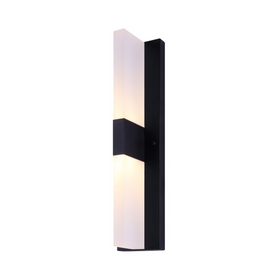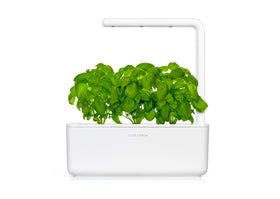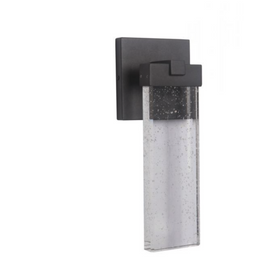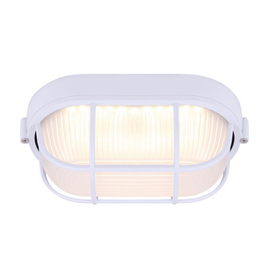
Artificial Grass: A Viable Option for Lawns?
Last Updated: Mar 19, 2025Recently, artificial grass has begun to grow in popularity as a low-maintenance option for residential lawns and landscaping. Synthetic grass used to be found almost exclusively in sports fields and athletic complexes. However, innovative designs that more realistically replicate traditional lawns have allowed artificial grass to make inroads into the residential market. In this short article, we take an in-depth look at the pros and cons of grass for the space around your home.
Table of Contents
- The Dark Side of Conventional Lawns
- What Is Artificial Grass?
- What Types of Artificial Grass Are Available Today?
- How Much Water and Energy Does Artificial Grass Save?
- Is Artificial Grass Healthy?
- How Is Artificial Grass Made?
- How Long Does Artificial Grass Last?
- What Are the Pros and Cons of Artificial Grass?

The Dark Side of Conventional Lawns
When you travel to many rural regions in the so-called "under-developed" world, one of the first things that stand out to travelers and tourists is that most homes are shrouded in vegetation. Instead of well-manicured lawns on either side of a driveway, most families dedicate every available space to cultivating valuable plants. A typical adobe home in the Mayan territories of Guatemala, for example, might be surrounded by several varieties of native fruit trees, with vining gourds climbing up the roof and over the window sills. Medicinal plants hide the small footpath that leads up to the home. Meanwhile, free-range chickens wander throughout this edible jungle forest.
These "forest gardens" are ubiquitous worldwide and stand in sharp contrast to the uniform patches of green grass that dominate the North American residential landscape. The history of lawns is generally traced back to aristocrats in Europe. They wanted to show their peasant neighbors that their vast wealth "afforded" them the ability to leave parts of their land to grow up with grass instead of plowing up every field for crops. Fast forward a couple of centuries, and lawns continue to be a symbol of prestige. In the battle for the greenest grass possible, pesticides and gas mowers are still prevalent around many homes.
Consider the following:
- Over 90 million pounds of herbicides are applied on lawns and gardens per year. Glyphosate, the most common of these herbicides, is increasingly being linked to several types of cancer.
- Americans use around 600 million gallons of gas every year to mow their lawns, resulting in close to 12 billion pounds of carbon dioxide emissions.
- The EPA estimates that at least 17 million gallons of gasoline are spilled annually by carelessly filling lawn mowers, leading to soil and water contamination.
- The average household uses almost 100 gallons of water every day for outdoor use, primarily to water their thirsty lawns.
Given these statistics, replacing a conventional lawn might seem like a no-brainer for homeowners who want to reduce their carbon footprint and limit their exposure to potentially dangerous chemicals. Here at Rise, we have written extensively about alternative landscaping options to the emblematic green turn lawn that has become the traditional standard. Check out our articles on how to grow a lawn without chemicals, the role of permaculture zones in changing your landscape design, and xeriscaping opportunities to reduce water consumption drastically.
Despite the practicality of these alternative landscaping options, many homeowners across North America will scoff at the idea of getting rid of their green lawn. Might there be a way for homeowners to enjoy a green lawn without the environmental costs associated with pesticide use, water use for irrigation, and fossil fuel use for maintenance?
It is important to note that natural grasslands and prairies can act as a carbon "sink." They essentially capture excess amounts of carbon dioxide from the air and deposit that carbon in the fertile soil. Indeed, most lawns do not boast the carbon capturing potential of natural prairies. But, turning your yard into a "prairie garden" could be another strategy that allows homeowners to do their part to sequester carbon.
Is Artificial Grass Healthy?
A drawback associated with artificial grass is that there are several health concerns related to these products. Many turf products come pre-treated with biocides. This step is taken because some studies have found that synthetic turf has been associated with an increased risk of infections from methicillin-resistant Staphylococcus aureus. Recent laboratory tests carried about by the Public Employees for Environmental Responsibility (PEER) find that many turf products contain the highly toxic fluorinated chemicals known as PFAS. The US Centers for Disease Control and Prevention (CDC) states that exposure to PFAS has a host of health effects associated, including cancer, liver damage, decreased fertility, and increased risk of asthma and thyroid disease. That's not exactly what you want in the areas where your children play.
Gardening & Outdoor
Shop the best high-performing gardening and outdoor products that impact your health, wealth, and the planet through their use.

Englander Grizzly Camp Stove ESW0030
Englander
In Stock

Englander Cub Camp Stove ESW0034
Englander
In Stock

Englander Black Bear Camp Stove ESW0032
Englander
In Stock

Click & Grow Smart Garden 9
Click & Grow
In Stock
3 Colors

Canarm CORIN LED Black Outdoor Light
Canarm
Out of Stock

Click & Grow Smart Garden 3
Click & Grow
In Stock
3 Colors

Englander Grizzly Kit Camp Stove ESW0031
Englander
In Stock

Englander Black Bear Kit Camp Stove ESW0033
Englander
In Stock

Craftmade Aria Outdoor LED Wall Mount Light
Craftmade
In Stock
2 Colors

Canarm LOL386WH White LED Outdoor Sconce
Canarm
In Stock
What Are the Pros and Cons of Artificial Grass?
From the manufacturer's publicity claims, it might seem like artificial grass is a sustainable wonder product. They report that it can reduce your carbon footprint, drastically lower your monthly water bill, and free up your summer evenings so that you don't have to pull out the mower from the garage. Authentic problems are associated with conventional lawns in North America. But, replacing natural grass with its manufactured counterpart made from petrochemicals is probably a step backward on the scale of environmental friendliness.

Besides having a vast embodied energy footprint, artificial grass also essentially eliminates the biophilic benefits of spending time outdoors. Moreover, there are several serious health concerns related to artificial turf products that homeowners should consider. If you decide that artificial grass is the best option for your home, we recommend looking for products made from bio-based fibers. And also, it might not hurt to leave some space for some natural plants as well!
Tobias Roberts
Tobias runs an agroecology farm and a natural building collective in the mountains of El Salvador. He specializes in earthen construction methods and uses permaculture design methods to integrate structures into the sustainability of the landscape.







